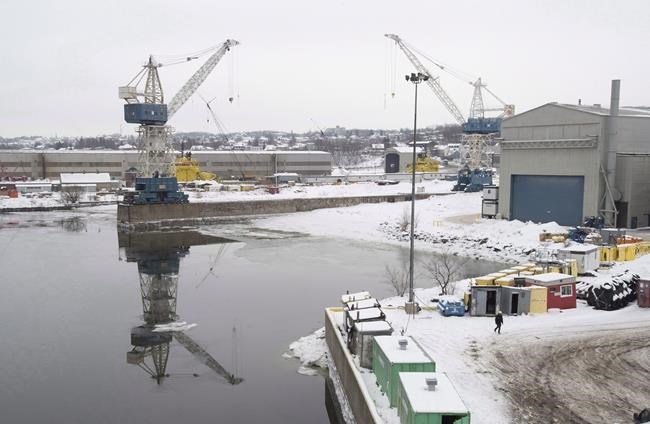OTTAWA — A Quebec shipyard that pushed the federal government to buy second-hand icebreakers for the Canadian Coast Guard two years ago is now late in delivering the much-needed vessels as it works to increase their icebreaking capabilities.
Ottawa agreed to purchase the three used civilian icebreakers at a total cost of at least $827 million from Chantier Davie in August 2018 after Prime Minister Justin Trudeau surprised many by personally announcing negotiations with the shipyard earlier that year.
The move followed concerns about a shortage of vessels, given the age of the current fleet, but also an intense lobbying campaign by Davie, the Quebec government and federal opposition parties for Ottawa to give the shipyard more work.
The first vessel — known as the CCGS Captain Molly Kool — was quickly delivered a few months later and thrown into action following a paint job and some minor conversion work to meet the Coast Guard's needs.
Yet while the CCGS Jean Goodwill was supposed to have been ready by the end of 2019 and the CCGS Vincent Massey this summer, Department of Fisheries and Oceans spokesman Benoit Mayrand confirmed this week that neither has been delivered.
"The CCGS Jean Goodwill is expected to be delivered to the Coast Guard by the end of 2020," Mayrand said in an email. "A delivery date for the CCGS Vincent Massey has not yet been finalized."
Mayrand attributed the delays to the need for more work to convert the Norwegian-built icebreakers to ensure they meet Canadian regulations and the Coast Guard's needs, including increasing their "icebreaking capability" and endurance.
Davie referred questions to the Coast Guard.
The Quebec shipyard first proposed leasing four second-hand icebreakers to the Coast Guard in April 2016. It continued to lobby the Liberal government for nearly two years, warning that it would need to lay off hundreds of workers without more federal contracts.
Davie's push over the next two years coincided with concerns about the Coast Guard's existing icebreaker fleet following a series of mechanical breakdowns in the older ships.
Representatives for Davie were later surprised when Trudeau announced on the radio during a visit to Quebec City in January 2018 that Ottawa would begin negotiations for the vessels the following morning.
The government eventually agreed to purchase rather than lease three of the vessels.
In announcing the deal in August 2018, the federal government pegged the cost at $610 million. Budget documents later tabled in the House of Commons showed Ottawa had set aside a total of $827 million for the ships, with the increase attributed to fees and import tariffs.
Mayrand did not immediately respond to questions Wednesday about why the upgrades were required or what they entailed, or how much the government expects to spend now.
The need to upgrade the vessels could raise fresh questions about whether the ships were well-suited for the coast guard, but University of Calgary shipbuilding expert Timothy Choi said there is a clear need for more icebreakers.
"I would say that if it were indeed the case that the ships weren't necessary and that it was just a jobs program for Quebec, then we wouldn't have seen Molly Kool rushed into service so soon after her arrival," he said.
"It's a matter of there being both a need for icebreakers of their class and a lack of better options that would have minimized further conversion costs and time. There is a significant dearth of available (or) spare icebreakers lying around."
Davie is currently in line to build six new icebreakers in the coming years after being the only shipyard to qualify for addition into the federal government's multibillion-dollar shipbuilding procurement strategy.
This report by The Canadian Press was first published July 29, 2020.
Lee Berthiaume, The Canadian Press




